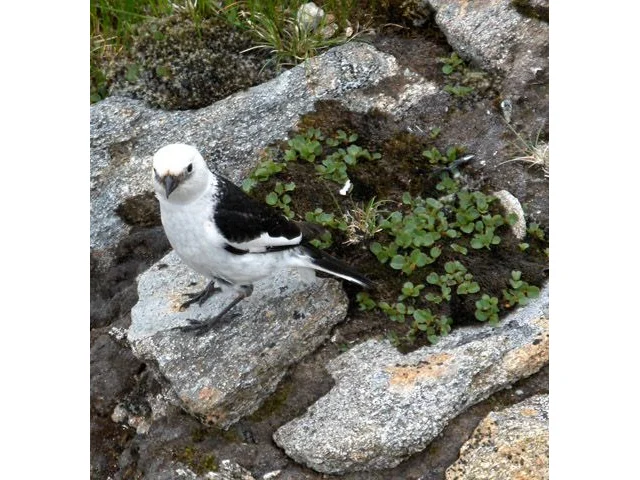BirdLife targets 10 global regions worse affected by climate change
04213133-2f48-4dd8-b709-4d8a24094ca4

BirdLife has named the 10 global regions where targeted conservation efforts would provide the greatest benefits against the impacts of climate change.
The regions identified in their study, ranging from Africa to South America, to Central Asia and the Asia-Pacific region, are areas where small-scale farmers will be most affected by climate change and where biodiversity hot-spots are also located. BirdLife hopes to mitigate for global warming's effects on both people and the natural ecosystems that support life on earth.
The 10 priority regions with the greatest potential benefits to humanity include:
• Central America – Mexico, Guatemala, Honduras, Nicaragua
• Caribbean – Jamaica, Haiti, Dominica, Puerto Rico, Venezuela
• Andes (South America) – Colombia, Ecuador, Peru, Bolivia, Argentina
• Guiana Highlands – Venezuela
• Atlantic Coast of Brazil (South America) – Brazil
• Albertine Rift – Zaire, Burundi, Tanzania, Uganda
• Madagascar – Madagascar
• Ghats – India
• Philippines – Philippines
• Java – Indonesia
Published in the journal PLOS ONE, Global Climate Change Adaptation Priorities for Biodiversity and Food Security represents the first global study to combine assessments of these impacts on both agriculture and biodiversity, in the hope of finding practical solutions for both.
The research used modeling of crops important to smallholder farmers such as maize and beans, and models of bird responses to climate change to identify areas in which change was high in both crop and habitat suitability. It also used bird species with restricted ranges as a surrogate for wildlife more generally, because birds are much better known than other comparable groups of species.
“Natural ecosystems support farmers in many different ways, such as through sustaining pollinators and pest-controlling species, while farmers’ responses to climate change will often have consequences for species and ecosystems,” said Dr Stuart Butchart, Head of Science at BirdLife International and a co-author of the study.
The authors of the study say that joint help for farmers and wildlife is urgently needed. Such actions could include work with farmers living in forested areas or promoting more biodiversity-friendly cropping techniques such as growing ‘shade’ coffee.
The 10 regions identified all intersect with global biodiversity hot-spots and cover 13 per cent of currently cultivated land in the tropics and 7-9 per cent of the world’s poorest human populations. These regions have potentially high returns on investment in climate adaptation for poverty reduction and conservation.
The regions identified in their study, ranging from Africa to South America, to Central Asia and the Asia-Pacific region, are areas where small-scale farmers will be most affected by climate change and where biodiversity hot-spots are also located. BirdLife hopes to mitigate for global warming's effects on both people and the natural ecosystems that support life on earth.
The 10 priority regions with the greatest potential benefits to humanity include:
• Central America – Mexico, Guatemala, Honduras, Nicaragua
• Caribbean – Jamaica, Haiti, Dominica, Puerto Rico, Venezuela
• Andes (South America) – Colombia, Ecuador, Peru, Bolivia, Argentina
• Guiana Highlands – Venezuela
• Atlantic Coast of Brazil (South America) – Brazil
• Albertine Rift – Zaire, Burundi, Tanzania, Uganda
• Madagascar – Madagascar
• Ghats – India
• Philippines – Philippines
• Java – Indonesia
Published in the journal PLOS ONE, Global Climate Change Adaptation Priorities for Biodiversity and Food Security represents the first global study to combine assessments of these impacts on both agriculture and biodiversity, in the hope of finding practical solutions for both.
The research used modeling of crops important to smallholder farmers such as maize and beans, and models of bird responses to climate change to identify areas in which change was high in both crop and habitat suitability. It also used bird species with restricted ranges as a surrogate for wildlife more generally, because birds are much better known than other comparable groups of species.
“Natural ecosystems support farmers in many different ways, such as through sustaining pollinators and pest-controlling species, while farmers’ responses to climate change will often have consequences for species and ecosystems,” said Dr Stuart Butchart, Head of Science at BirdLife International and a co-author of the study.
The authors of the study say that joint help for farmers and wildlife is urgently needed. Such actions could include work with farmers living in forested areas or promoting more biodiversity-friendly cropping techniques such as growing ‘shade’ coffee.
The 10 regions identified all intersect with global biodiversity hot-spots and cover 13 per cent of currently cultivated land in the tropics and 7-9 per cent of the world’s poorest human populations. These regions have potentially high returns on investment in climate adaptation for poverty reduction and conservation.

